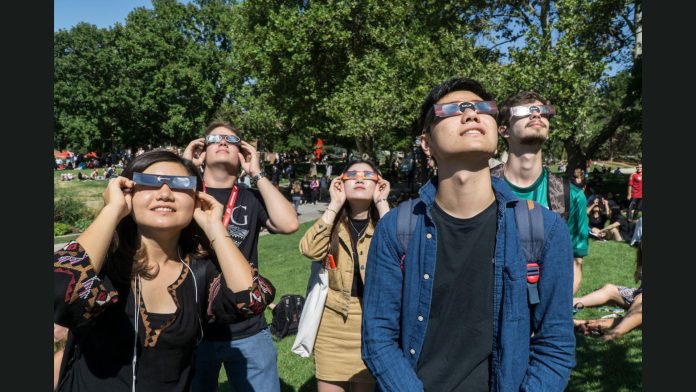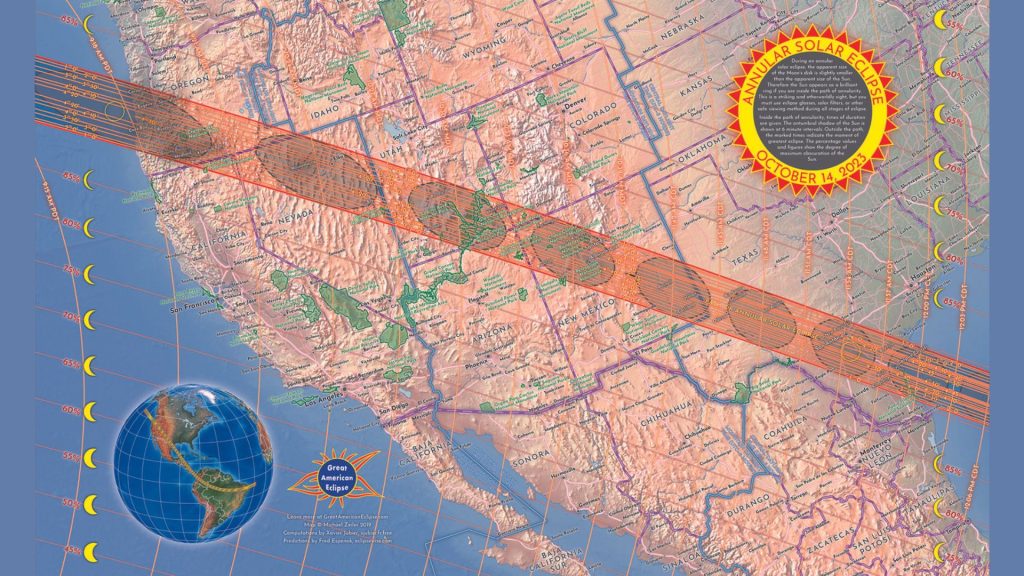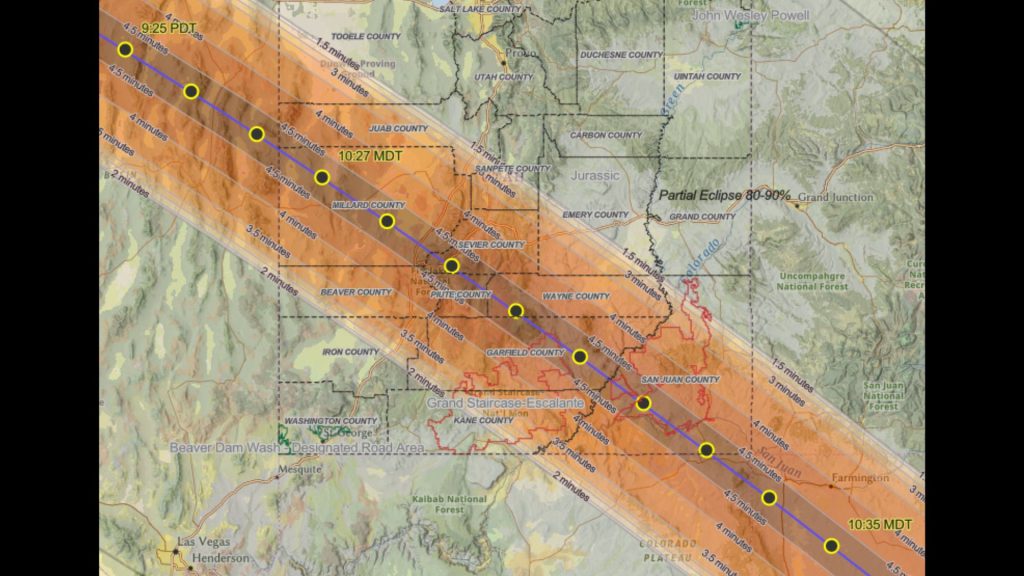
DELTA, Utah, Oct. 12, 2023 (Gephardt Daily) — Spectators throughout Utah will be looking skyward Saturday morning to catch a glimpse of an annular solar eclipse.
The so-called “ring of fire” eclipse is expected to attract an estimated 300,000 visitors to central and southeastern Utah, according to the Utah Department of Transportation. The moon will begin crossing the sun about 9 a.m. and reach its center at 10:20 a.m., with the annularity lasting about 4 1/2 minutes, officials said.
“This will be a cool event,” said Paul Ricketts, director of the University of Utah‘s South Physics Observatory. “You’ll still see the surroundings get darker, you’ll feel it get colder, but you won’t be able to look at the eclipse without protective glasses. Plus, this will last way longer than the total eclipse.”
The annular solar eclipse will be different from the total eclipse Utahns witnessed in 2017. During an annular eclipse, the moon is at a farther distance from the Earth, which makes it appear smaller, Ricketts said. Instead of blocking out the entire sun, the moon is surrounded by what appears to be a ring of fire.
“Right now, our Earth position with the moon and the sun, they appear the same size in the sky, which is why we can enjoy total eclipses,” he said. “A few billion years down the road, the moon will appear too small and we’d only get these types of annular eclipses. We’re lucky to be alive right now. In the future, we’d only able to see annular eclipses that look like a much smaller black dot crossing the sun’s surface.”

While the diagonal southeastern path of the total annular solar eclipse will provide the best views, more than 80% of the sun will be blocked out throughout Utah, officials said.
The University of Utah’s Cosmic Ray Group is hosting a viewing party at its visitor center, 648 W. Main St., Delta. The group will have telescopes with safety filters and about 1,000 pairs of eclipse glasses for people to use.
“Delta isn’t in the exact center of the annular eclipse, but you can still see the entire moon,” said Julie Callahan, program coordinator for Utah’s physics and astronomy department. “It’ll be off center, but you’ll see a giant bite taken out of the sun.”
The duration of annularity — when the moon is fully silhouetted against the sun — varies by viewing location. To determine the precise duration of an exact location, visit this interactive eclipse Google map developed by author and astrophotographer Xavier Jubier.
Officials also urge use of eclipse glasses or solar viewing items approved by the American Astronomical Association. Those without eye protection can poke a hole in piece of paper and view the shadow on the ground.
Eclipse glasses are available for $3 per pair at Clark Planetarium, 110 S. 400 West, Salt Lake City.
Clark Planetarium also is partnering with Salt Lake County Mayor Jenny Wilson to host a eclipse viewing party at the Gateway Plaza, 400 W. 200 South. Eclipse-themed activities and games also are planned.
Following the eclipse viewing, Wilson’s book and media club will take part in a discussion about the eclipse with the planetarium’s education team.
“The Clark Planetarium is a pillar in our community’s educational landscape,” Wilson said. “We are so excited to partner with them on events like The Eclipse Viewing Extravaganza. This and my Book and Media Club, which blends education with community engagement, are about coming together and celebrating the role we all play in our continued learning and growth.”
More information about safe solar eclipse viewing is available here.

UDOT is projecting an influx of vehicle traffic on central and southern Utah’s highways for the eclipse. The heaviest traffic is expected in the Richfield and Mexican Hat areas.
Motorists should expect delays Friday-Sunday on several central Utah routes, including Interstate 15, I-70, U.S. 89 and state Route 191, according to UDOT.
UDOT officials are encouraging eclipse watchers to stay an extra day if possible to avoid several hours of delays directly after the eclipse.
State transportation officials also are urging drivers not to stop in the roadway or park on shoulders to watch the eclipse. Motorists also should pay attention and watch for pedestrians viewing the eclipse.
Several counties are forecasted to have viewing locations with a duration of four minutes or more: Beaver, Garfield, Juab, Millard, Piute, San Juan, Sevier, Tooele and Wayne. For eclipse duration by city, visit nationaleclipse.com.
Some indigenous tribes in Utah consider an eclipse to be a sacred event. Because it will be happening on their homeland, Navajo Tribal Parks and Monuments — including Monument Valley — will be closed from 8 a.m. to 1 p.m.






